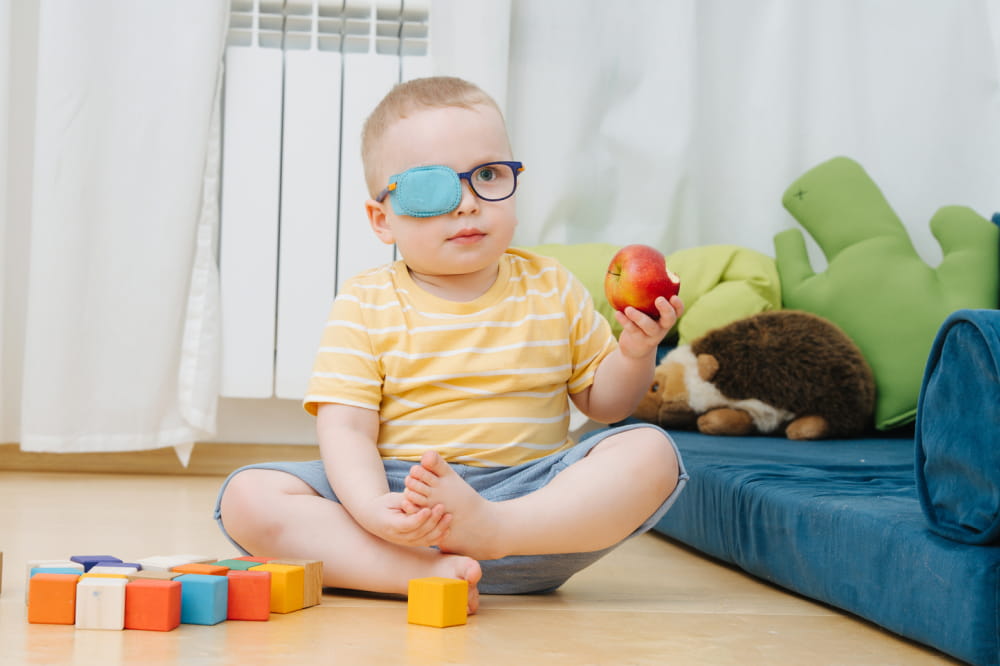
Symptoms, causes, and management for lazy eye
A lazy eye, also known as amblyopia, is a condition where one eye has reduced vision. It occurs due to abnormal vision development in the early stages of life, and the weaker eye usually wanders either inward or outward. This condition typically develops from birth up to seven and is a leading cause of vision reduction in children. In rare cases, both eyes may be affected. However, early diagnosis and treatment can prevent long-term problems.
Signs and symptoms
It is not always easy to assess if your child has a lazy eye. Sadly, diagnosis for most children does not happen until they go for a routine eye examination with an eye care expert or healthcare provider. However, if you detect lazy eye symptoms in your child, you will find changes in how they interact with the space and objects around them. A child suffering from lazy eye may experience the following signs:
- Have a droopy eyelid or crossed eyes
- Frequently tilt their head onto one side
- Squint a lot
- Shut one eye
- Favor one side of the body
- Collide into objects, typically on one side of the body
Causes
- Droopy or sagging eyelid or ptosis that blocks your vision
- A cataract is the formation of a cloudy film on your eye lens that makes the whole thing look blurry. Consequently, the vision in that eye does not develop as well as it must.
- Strabismus is a condition where your eye does not line up as well as it must, and one eye turns outward or inward. Individuals suffering from this condition fail to focus both eyes on a single image, resulting in double vision. Hence, the brain disregards input from the misaligned eye.
- Refractive errors – One eye has a better focus than the other, and the other may be farsighted, nearsighted, or have astigmatism (blurry or distorted vision). When your brain gets a clear and blurry image, it begins ignoring the blurry one. If this continues for months or years, the vision in the blurry eye worsens.
Risk factors
- Were smaller than the typical size at birth
- Were prematurely born
- Have developmental disabilities
- Have a family history of lazy eye or other eye conditions
Treatment options
The doctor will initially address underlying eye conditions to cure lazy eyes. This involves assisting the damaged eye to function normally. The earlier you receive the treatment, the better the outcome. Early treatment methods are straightforward and comprise of:
- Eye patch – Wearing an eye patch on the dominant eye helps strengthen your weaker eye. Depending on the lazy eye’s intensity, doctors recommend wearing eye patches for an hour or two daily. The eye patch helps develop the brain area responsible for vision.
- Contact lenses or glasses – Doctors may prescribe contact lenses or corrective glasses if you have astigmatism, farsightedness, or nearsightedness.
- Eye drops – These will have to be employed once or twice daily to cloud the vision in the healthy eye. It encourages you to use the weaker eye more and is an excellent alternative to wearing an eye patch.
- Surgery – You may need surgery for the eye muscles if you have eyes pointing in opposite directions or crossed eyes.
Doctors may also prescribe contact lenses, glasses, or patching therapy to correct the weaker eye and safeguard your child’s vision.




